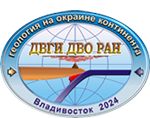Article Earthquake-Induced Landslide Risk Assessment: An Example from Sakhalin Island, Russia Популярные
Число скачиваний: 1605
geosciences-09-00305.pdf
Alexey Konovalov , Yuriy Gensiorovskiy, Valentina Lobkina, Alexandra Muzychenko, Yuliya Stepnova, Leonid Muzychenko, Andrey Stepnov and Mikhail Mikhalyov
Geosciences 2019, 9(7), 305; https://doi.org/10.3390/geosciences9070305
Abstract
Damages caused by earthquake-induced ground effects can be of the order or significantly exceed the expected damages from ground shaking. A new probabilistic technique is considered in this study for earthquake-induced landslide risk assessment. A fully probabilistic technique suggests a multi-stage hazard assessment. These stages include the determination of seismic hazard curves and landslide probabilistic models, a vulnerability assessment, and geotechnical investigations. At each of the stages, the uncertainties should be carefully analyzed. A logic tree technique, which handles all available models and parameters, was used in the study. The method was applied considering child education facilities located at the foot of a natural slope in the south of Sakhalin Island which is known as an active seismic and land sliding area. The significant differences in the ground motion scenario in terms of the 475-year seismic hazard map and the fully probabilistic approach considered suggests that seismic landslide risk could be underestimated or overestimated when using the 475-year seismic hazard map for risk assessment. The given approach follows the rational risk management idea that handles well all possible ground motion scenarios, slope models, and parameters. The authors suggest that the given approach can improve geotechnical studies of slope stability.







